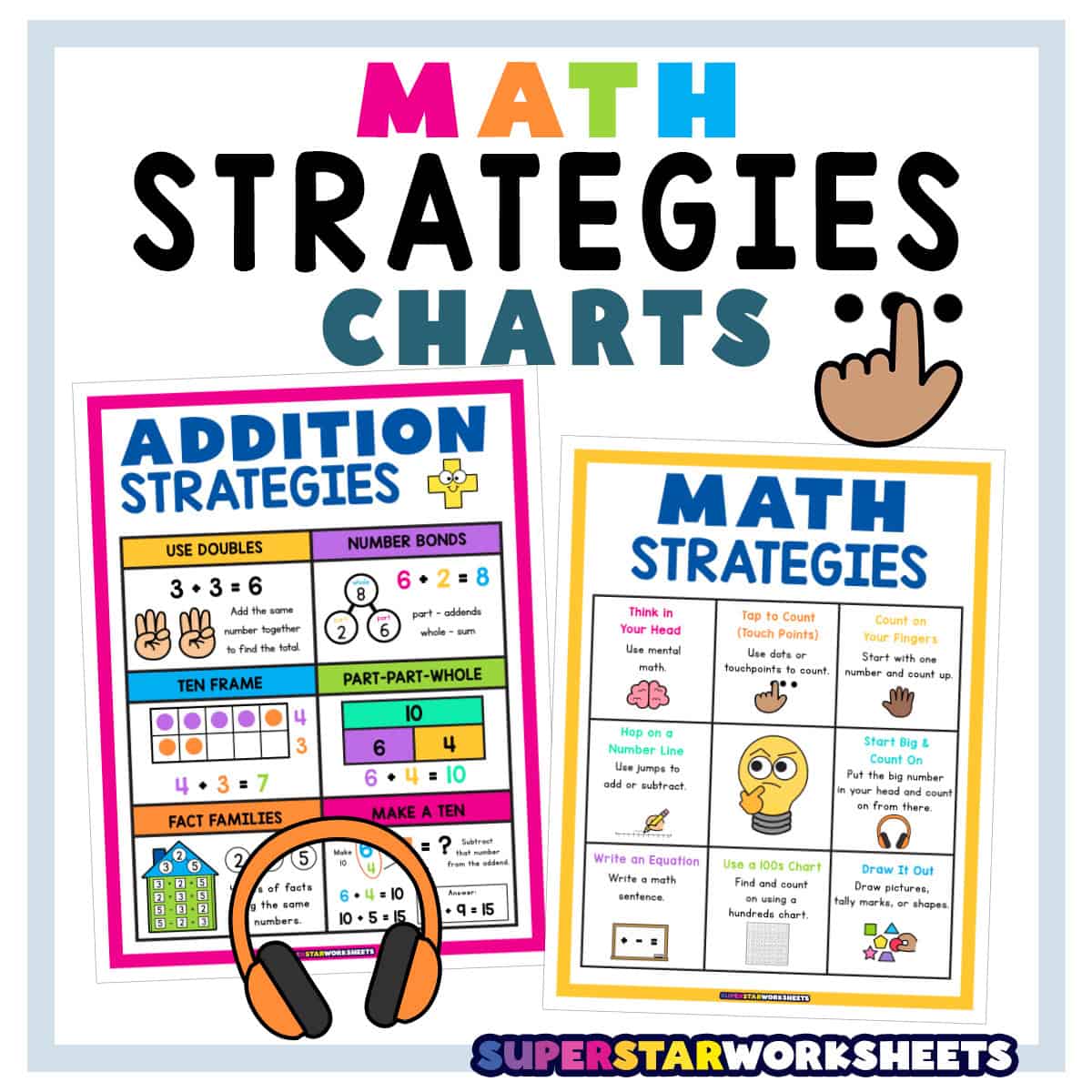
Math Strategies Charts make teaching math so much easier! Give your students visual support for addition facts, subtraction strategies, multiplication tables, and division concepts! These free, printable PDF downloads are perfect for classroom walls or homeschool learning spaces, helping kids independently tackle problem-solving and build those essential math skills.

Math Strategy Chart
An engaging chart with eight essential problem-solving techniques that help students tackle math problems. From mental math and counting strategies to visual methods like drawing it out and using number lines, this chart is perfect for classroom display or homeschool reference.
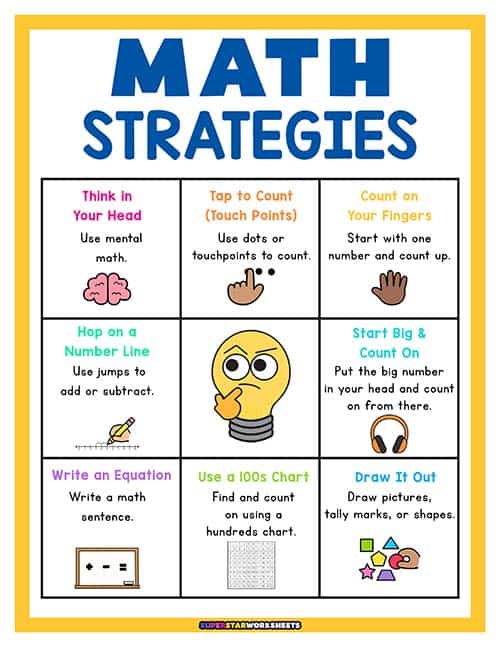
Math Strategies Chart
An engaging chart with eight essential problem-solving techniques that help students tackle math problems. From mental math and counting strategies to visual methods like drawing it out and using number lines, this chart is perfect for classroom display or homeschool reference.
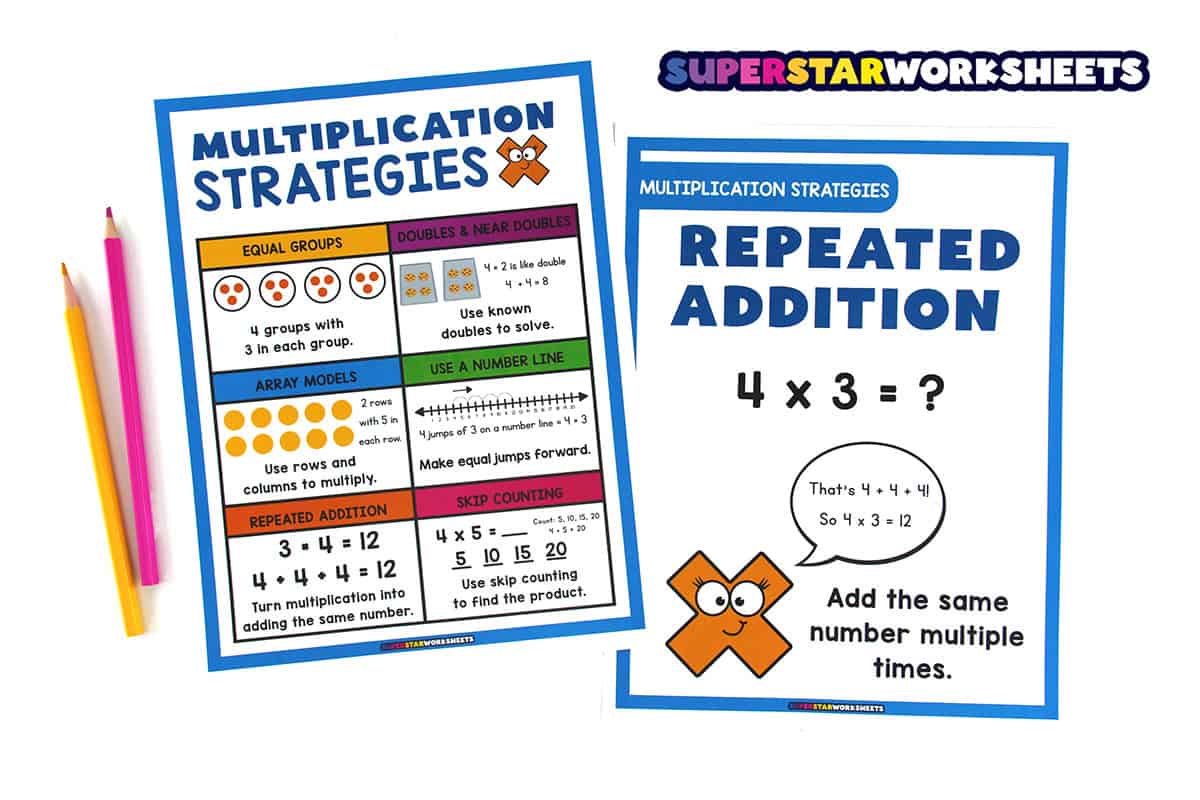
Addition Math Strategies Chart
These math reference posters align perfectly with curriculum requirements for elementary grades K-5, covering number sense skills like composing and decomposing numbers, understanding place value, and developing computational fluency. Encourage students to regularly incorporate their learning posters into their activities, creating an Interactive Math experience.

Addition Math Strategy Chart
Addition Strategies chart showcases six key techniques, including doubles, number bonds, ten frames, part-part-whole, fact families, and make-a-ten strategies with clear visual examples. Teachers and homeschool families can use this reference poster to help students choose the most effective method for solving addition problems confidently.
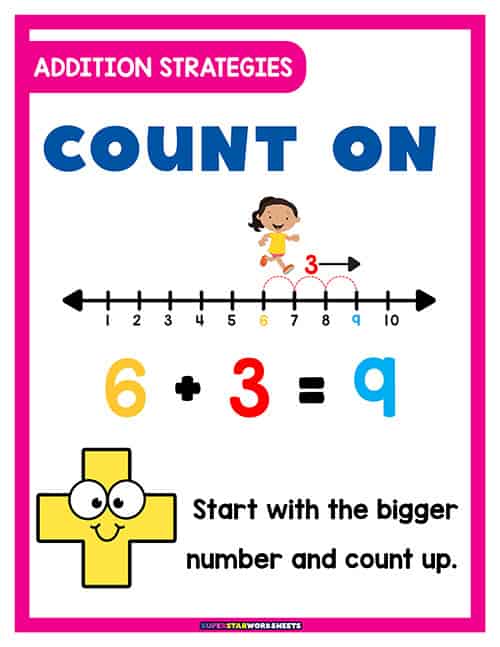
Addition Math Strategy Count On (Vertical)
This vertical count on strategy chart teaches students to start with the larger number and count forward using a number line, making addition problems quicker and more efficient. This visual approach helps kids understand that they don’t need to start counting from one, building number sense and mental math skills.
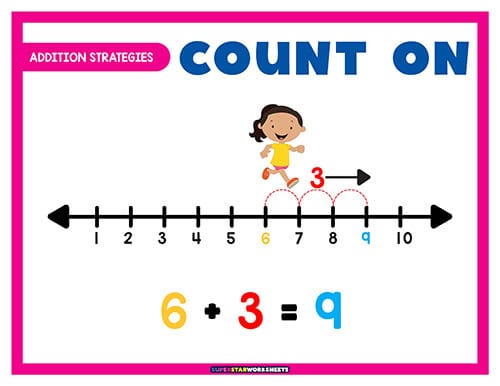
Addition Math Strategy Count On (Horizontal)
A free PDF download. The count on strategy is a visual approach that helps kids understand that they don’t need to start counting from one, building number sense and mental math skills.
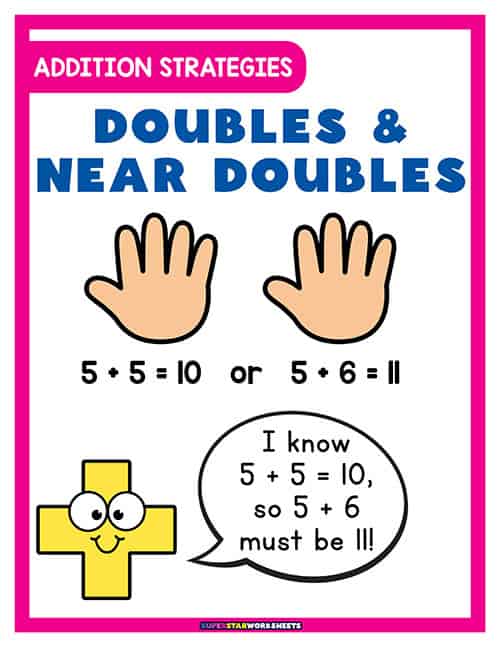
Addition Math Strategies Doubles and Near Doubles (Vertical)
This Doubles and Near Doubles chart shows students how to use known double facts (like 5+5=10) to solve nearby problems (like 5+6=11) by adding one more. A free PDF download for classrooms and homeschool settings.
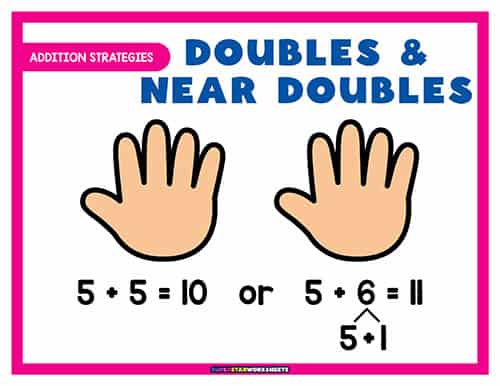
Addition Math Strategy Doubles & Near Doubles (Horizontal)
Perfect for building fluency with addition facts, this strategy helps kids see patterns and relationships between numbers. Using doubles and near-doubles is an easy strategy to teach! Find more addition worksheets here.
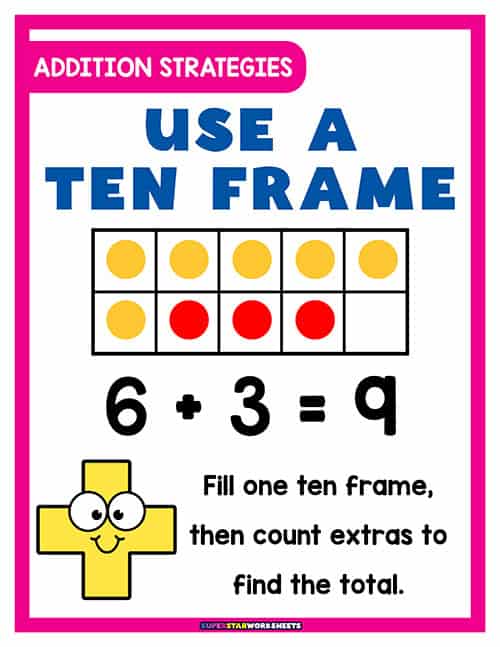
Addition Math Strategy Ten Frame (Vertical)
A printable use a ten fram poster with visual representation of addition problems. This foundational tool helps students understand place value, number relationships, and builds a strong foundation for more advanced math skills.
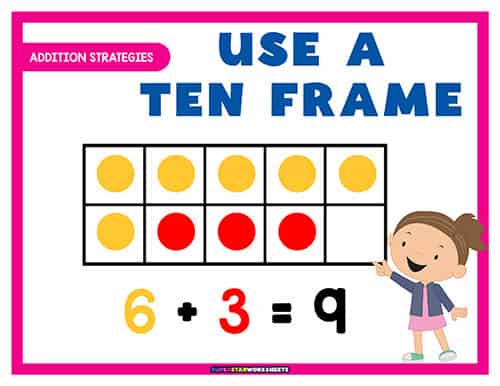
Addition Math Strategy Ten Frame (Horizontal)
This horizontal ten frame strategy chart demonstrates how to visualize addition problems by filling ten frames and counting extras, making abstract math concepts concrete and visual.
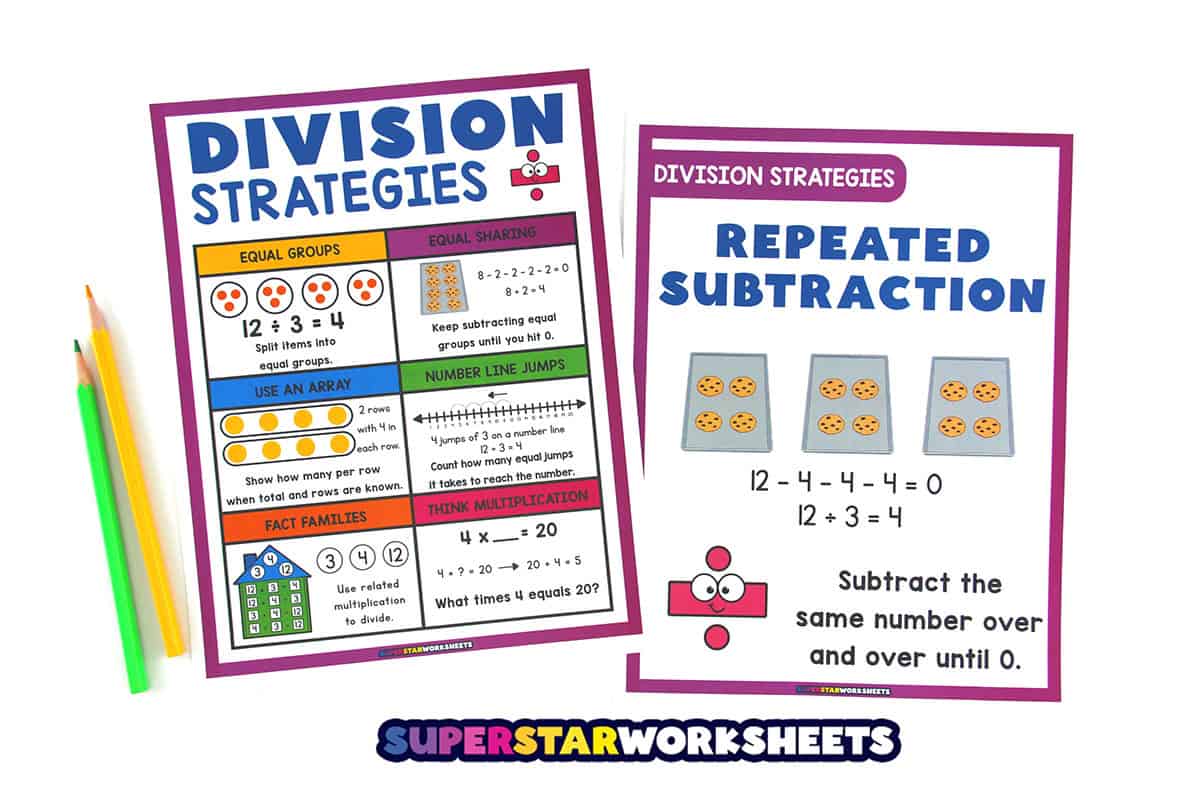
Subtraction Strategy Charts
Each of these posters reinforces key mathematical practices like reasoning abstractly, modeling with mathematics, and looking for patterns and structure – skills that form the foundation for algebraic thinking and higher-level math concepts. Perfect for math introduction, intervention, RTI support, special education accommodations, or simply helping all students master fundamental arithmetic operations with confidence and understanding.
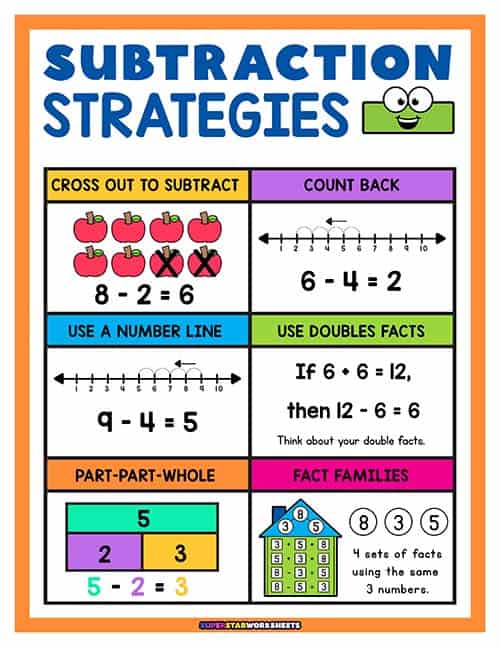
Subtraction Math Strategy Chart
Our subtraction strategies chart shows six techniques to students learning to subtract. This poster includes cross out to subtract, count back, number lines, doubles facts, part-part-whole, and fact families with clear visual examples.
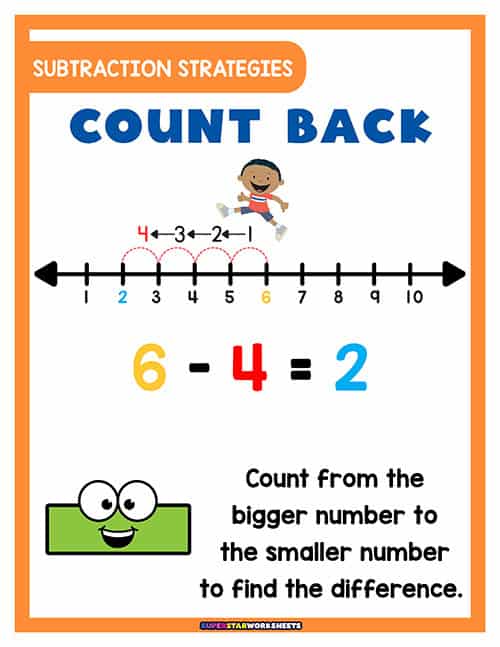
Subtraction Math Strategy Count Back (Vertical)
The Count Back strategy chart teaches students to start at the larger number and count backward on a number line to find the difference, making subtraction more visual and intuitive. There is an adorable subtraction Sam face on the bottom, too!
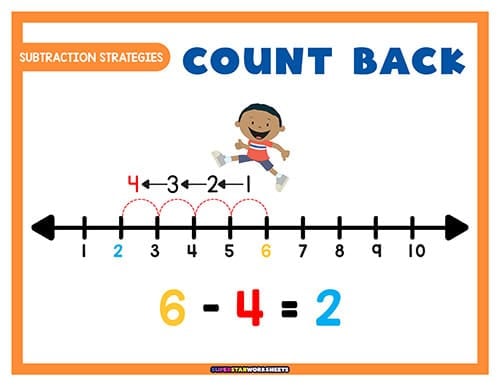
Subtraction Math Strategy Count Back (Horizontal)
The count back strategy helps kids understand subtraction as the inverse of addition while building number sense and mental math fluency. Perfect for elementary students.
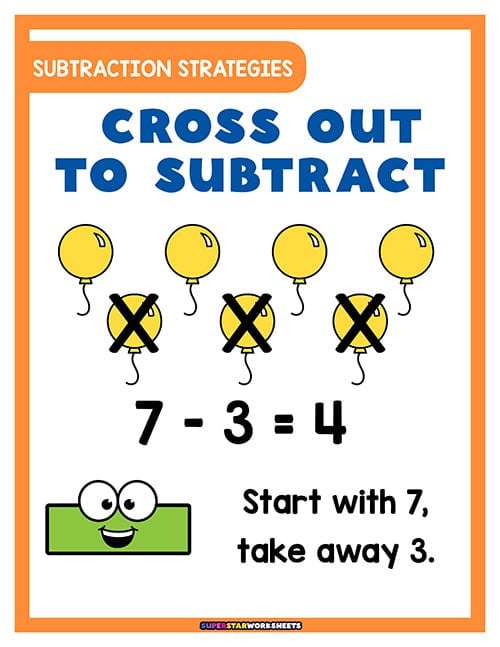
Subtraction Math Strategy Cross Out (Vertical)
This Cross Out to Subtract chart shows students how to visualize subtraction by starting with a set of objects and crossing out the amount being subtracted to find what remains.
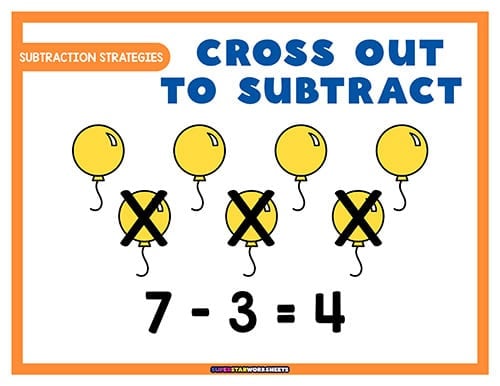
Subtraction Math Strategy Cross Out (Horizontal)
An elementary resource perfect for concrete learners. This hands-on strategy makes abstract subtraction problems tangible and easy to understand. More Subtraction Worksheets.
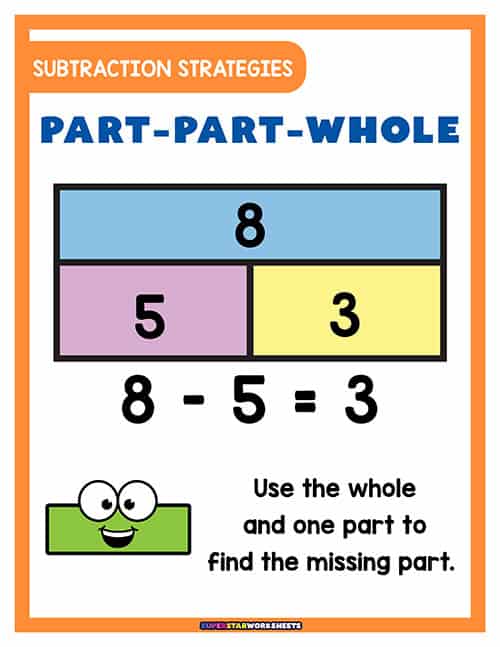
Subtraction Math Strategy Part Part Whole (Vertical)
This visual part part whole model helps students see how addition and subtraction are related operations and builds algebraic thinking skills. A great visual resource for students in elementary school.
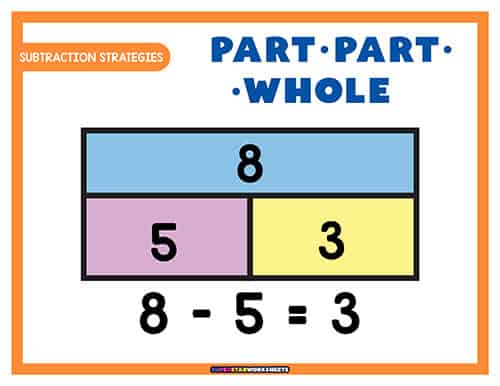
Subtraction Math Strategy Part Part Whole (Horizontal)
The Part-Part-Whole strategy chart demonstrates how subtraction problems can be solved by understanding the relationship between the whole number and its parts, using one known part to find the missing part.
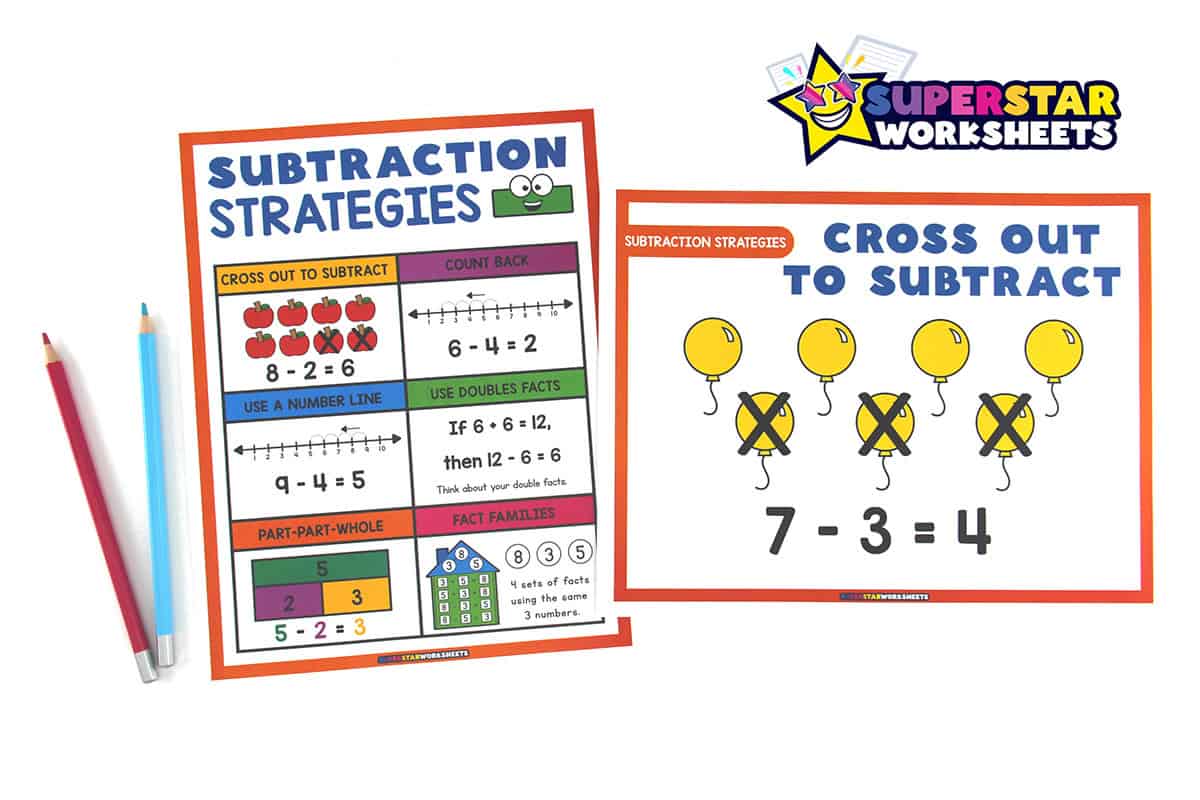
Multiplication Math Strategies
Below you will find posters that address various multiplication strategies. These strategies include equal groups, doubles & near doubles, array models, number lines, repeated addition, and skip counting.
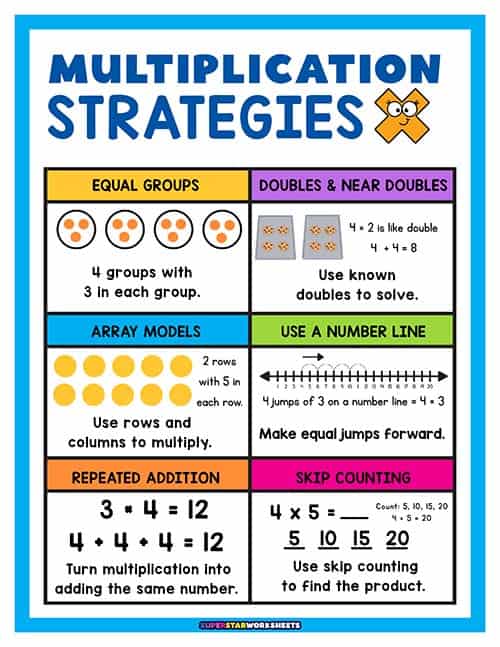
Multiplication Math Strategy Chart
This Multiplication Strategies chart showcases six key techniques to solve multiplication. It includes equal groups, doubles, array models, number lines, repeated addition, and skip counting with clear visual examples.
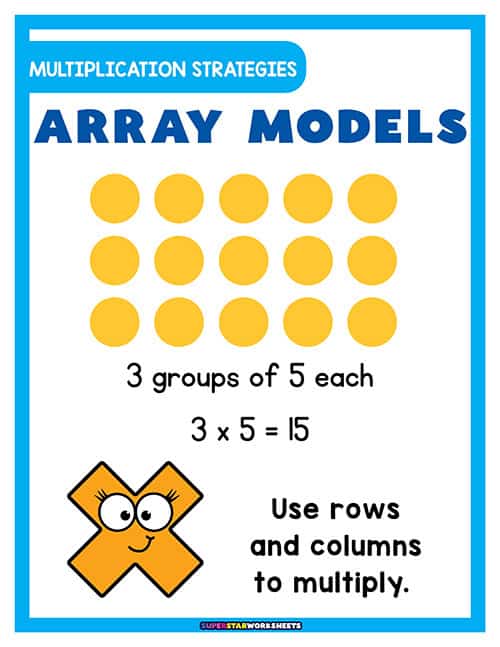
Multiplication Math Strategy Array Models
The Array Models strategy chart teaches students to visualize multiplication by arranging objects in equal rows and columns, making abstract problems concrete and visual. This is a great beginning strategy for 2nd and 3rd graders.
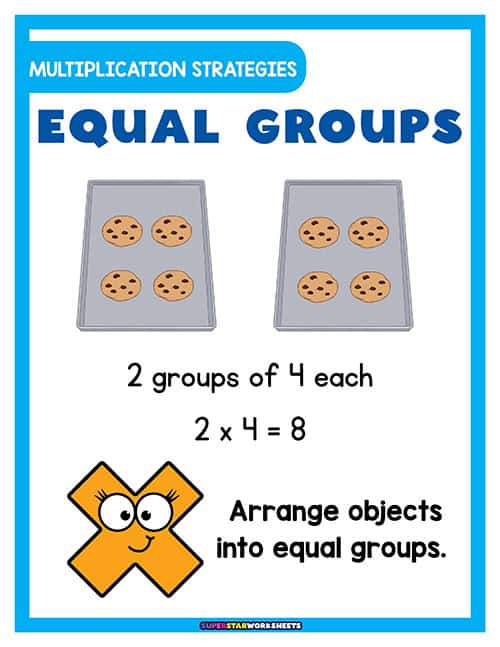
Multiplication Math Strategy Equal Groups
This Equal Groups strategy chart shows students how to think of multiplication as combining the same number of objects multiple times, using real-world examples like cookies on baking sheets. Perfect for introducing multiplication concepts, this visual method helps kids connect multiplication to everyday situations.
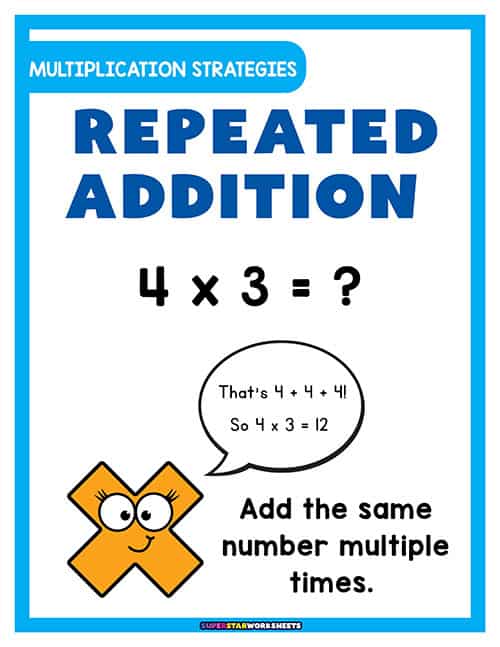
Multiplication Math Strategy Repeated Addition
The Repeated Addition strategy chart shows students how multiplication is simply adding the same number multiple times. This approach helps kids who are comfortable with addition make the transition to understanding what multiplication means.

Division Math Strategies Posters
The following division strategy posters are prefect for students in second and third grade. There are six strategies represented on these posters. They include: equal groups, equal sharing, using an array, number line jumps, fact families, and think multiplication
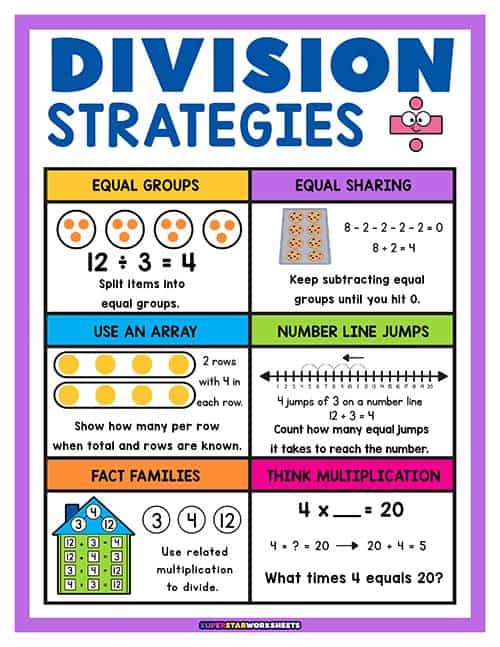
Division Math Strategy Chart
This comprehensive Division Strategies chart presents six strategies, including equal groups, equal sharing, arrays, number line jumps, fact families, and thinking multiplication with clear visual examples. Teachers and homeschool families can display this reference poster to help students choose the most effective division method.
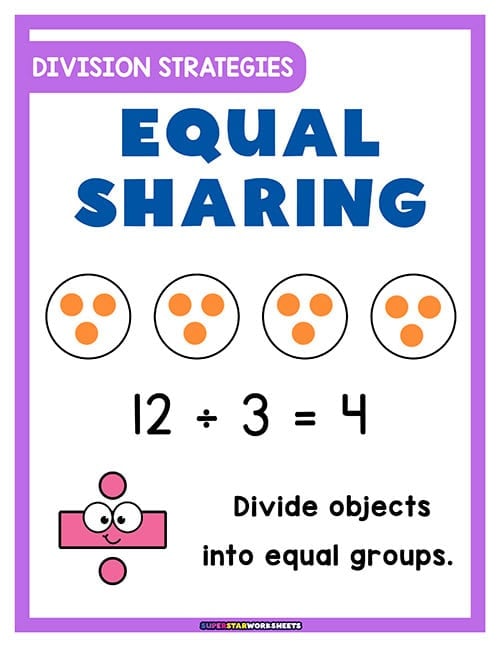
Division Math Strategy Equal Sharing
The Equal Sharing strategy teaches students to think of division as distributing objects fairly into equal groups, making abstract division problems concrete and visual. This approach helps kids understand division as sharing equally.
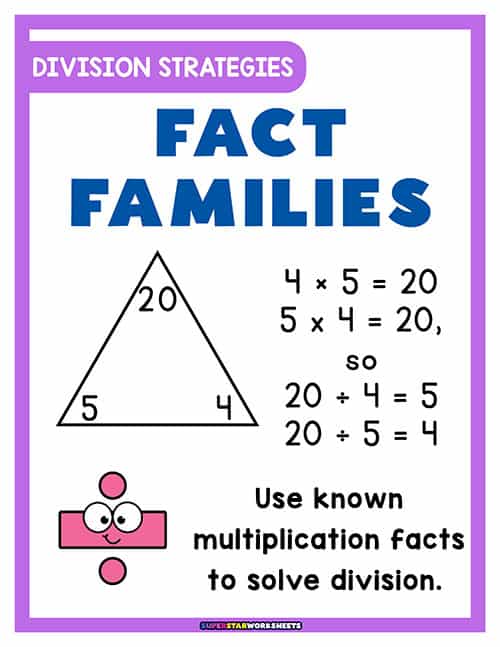
Division Math Strategy Fact Families
This Fact Families strategy chart shows students how to use their known multiplication facts to solve division problems by understanding the inverse relationship between the operations. This strategy is perfect for building fluency.
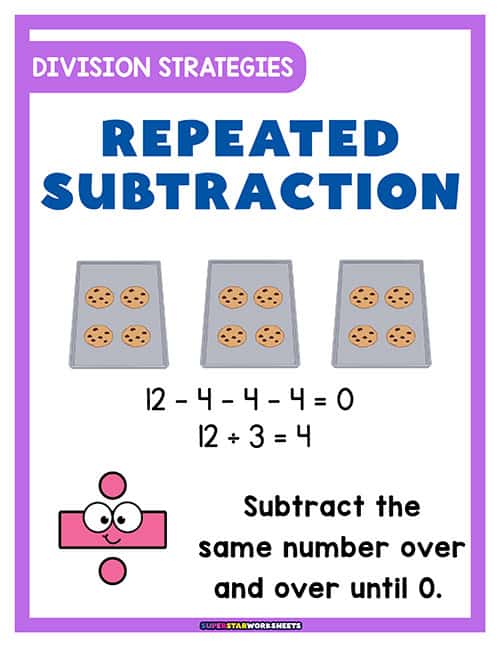
Division Math Strategy Repeated Subtraction
This strategy chart shows repeated subtraction. It’s one way division can be solved by subtracting the same number repeatedly until reaching zero. This visual approach helps kids understand what division means while building number sense and computational thinking.
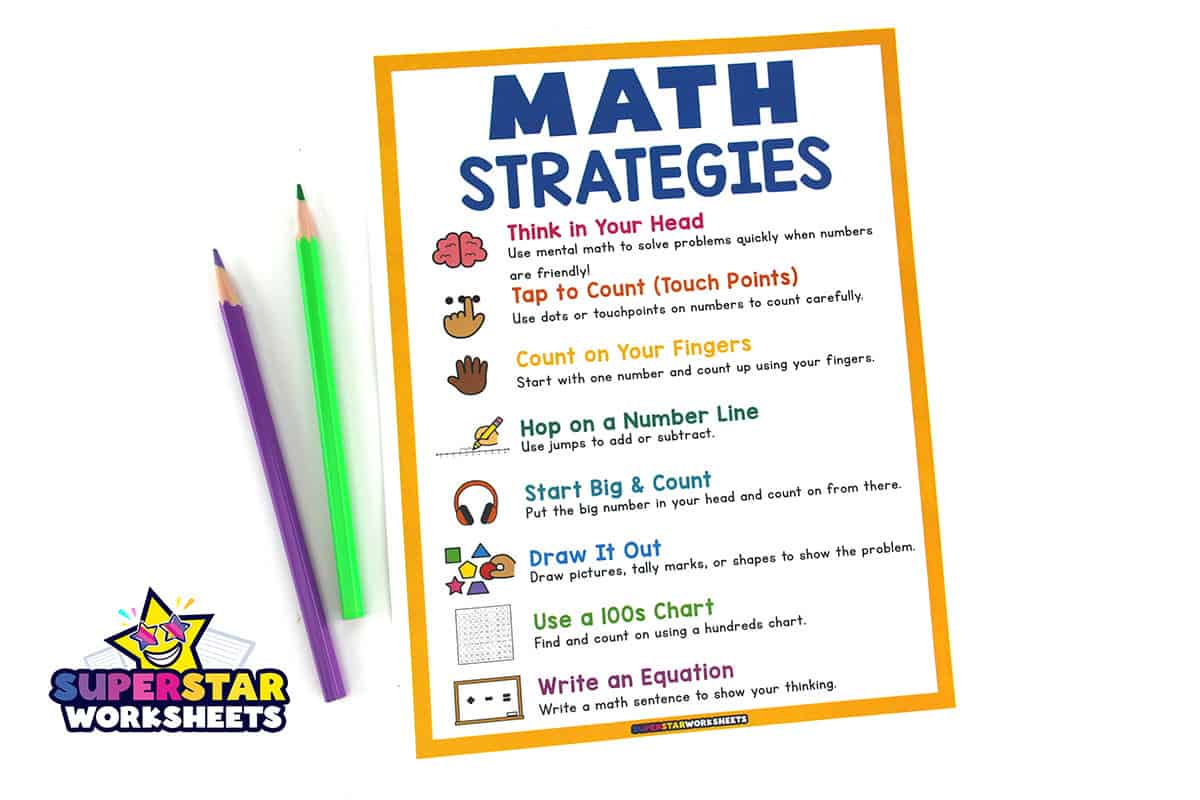

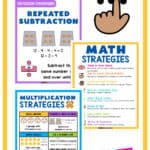
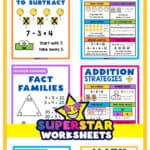
Leave a Reply